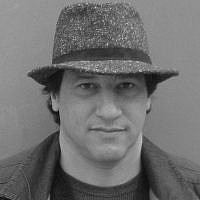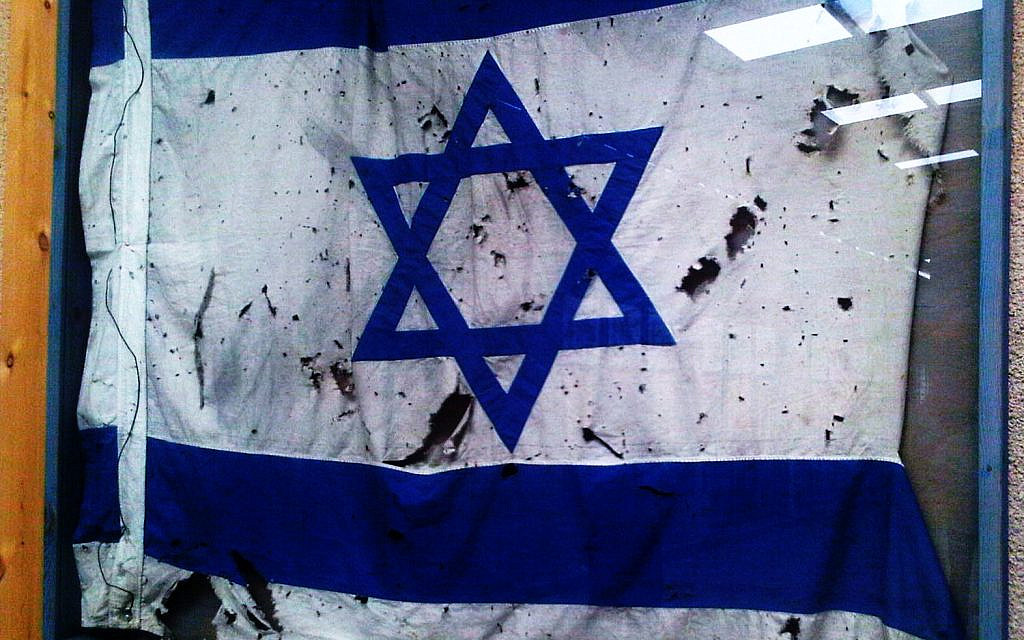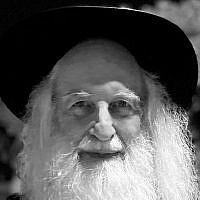It is still Yom Ha’atzmaut
Fifty years ago this week, on Yom Ha’atzmaut, Independence Day, what people felt most in Israel – and about Israel – was gloom.
Seven months and a bit had gone by since Egypt attacked in the south and Syria in the north, attacks that Israel did not know for sure were coming until early in the morning they came, attacks for which Israel was hardly prepared, attacks that succeeded in their first days to such a degree that, as Pulitzer Prize-winning New York Times reporter, Seymour Hersh, put it:
Israeli soldiers were being killed as never before; some units simply fled in disarray from battle. Five hundred tanks and forty-nine aircraft were lost in the first three days. Egyptian forces blasted through the Bar-Lev defense line of the [Suez] canal and soon had two large armies on the eastern bank. Israeli counterattacks by three tank divisions were beaten off. On the Golan Heights, Syrian forces, bolstered by fourteen hundred tanks, rolled through Israeli defenses and moved to the edge of Galilee. Only a few Israeli tanks stood between the Syrians and the heavily populated Hula Valley. Haifa was just hours away.
Many Israelis thought it was all over — that, as Moshe Dayan said, “this is the end of the Third Temple.”
As Israel was being laid waste, the “Samson Option,” a plan to drop nuclear bombs on Cairo and Damascus was set in motion. The engines of eight planes holding nuclear bombs waiting on the tarmac for go-orders, idled nonstop for days, so the jets could be in the air seconds after orders came. Orders did not come, but every Israeli knew they might have.
Even after Israel beat back the Egyptian and Syrian armies, eventually, crossing over the Suez Canal into Egypt and driving past the Golan Heights into Syria, even after Israel seemed to win the war, it was a sort of win that felt like a loss. Before the war ended, OPEC started an embargo that led many countries, fearful of being cut off from Saudi oil, to denounce Israel. US President Richard Nixon rushed through a 2.2 billion dollar airlift of vital arms to Israel during the war, highlighting Israel’s dependence on American largesse. It was not lost on us that there were powerful people in marble buildings in Washington who told the president not to give the bombs and the guns. Seymour Hersh wrote that, but for those planes idling with nuclear explosives in their holds, Nixon might never have delivered those arms.
Israelis felt weaker, more alone and more embattled than we had maybe ever felt before, and for good reason. All this came as a shock, and Israel, post-Yom Kippur War, was a nation in profound crisis.
By the end of October 1973, people knew that a lot of what they knew about the country at the beginning of October was flat-out wrong. Before the war, they knew that Israel was secure. They knew that the country’s generals were mostly good at their jobs, its army mostly proficient and its politicians mostly reliable. They knew that, in Israel, human life, or at least the lives of Jews, really mattered, and that no one would let lives be lost because of stupidity or folly.
But at the end of the war, they knew that Syrian soldiers might have made it to Haifa, and Egyptian tanks might have made it to Tel Aviv. They knew that the army had been caught off guard and that the ministers in Jerusalem had been clueless. They knew that soldiers had been left to die in bunkers along the Bar Lev line in Sinai and in the Golan Heights facing Syria. Things they thought solid – barriers at borders, early warning systems, intelligence-gathering procedures, lines of military command, defense strategies – had all melted into air.
Blame
It took time to absorb this new knowledge. Although the war ended on October 26, 1973, just 20 days after it started, the borders stayed tense for long months – shots were still fired in the Golan, and Israelis spent nights in shelters – and reserve soldiers were sent home slowly, most of the last of them getting out only just before Yom Ha’atzmaut, and some after. Hospital wards cared for 8,000 wounded soldiers.
When the war ended, 242 men were prisoners in Egypt, 68 in Syria and four in Lebanon, and some, the papers wrote, were likely being tortured. There was a two-part prisoner swap with Egypt in November, but when Yom Ha’atzmaut came in 1974, the Syrians still held 68 prisoners, though by then some were dead. Four months passed before Henry Kissenger got from Damascus even a list of the prisoners’ names, leaving worried parents, wives and kids to spend long nights wondering if their son/husband/father was still alive, and it wasn’t until a full year later that Egypt sent back the bodies of 39 soldiers who died there as prisoners.
An artist named Mimi Tamari sewed fabric amulets for each of the prisoners, and sent them, though she knew they would not arrive. The official poster for Yom Ha’atzmaut, 1974, was a collage of these amulets, each embroidered with the word, “Peace”.
The prisoners were everywhere present-in-their-absence. A woman named Tzapi Simons, who lived in bewildered uncertainty for months until her husband Meir was finally discovered dead in a tank somewhere in Sinai, wrote how Meir visited her in a dream. She knew she could not convince him to stay, but she pressed him, in the dream, to find his way to his parents who, like her, needed to see him.
On November 21, 25 days after the war ended, a committee started to investigate the war, and why the army and government did not see it coming. The inquiry, headed by the Supreme Court chief justice, Shimon Agranat, held 140 sessions, hearing testimony from 58 witnesses, putting out its first report on April 1.
While the commission did its work, the country tried to collect itself. The elections that were supposed to be in October were rescheduled for December 31, 1973, and sad, muted campaigns were launched. When the votes were counted, the ruling Labor Alignment had lost five seats, but Golda Meir easily put together a coalition of 65 seats. This was a comfortable majority, but Meir’s earlier coalition had 76 seats, and this was a sign that people were losing faith in their government.
One man made this decline quicker. In February 1974, an infantry reserve captain named Motti Ashkenazi was decommissioned from “Fort Budapest,” ten miles from Port Fouad in Sinai, near the Suez Canal. He had arrived there with his troops before Rosh Hashanah, two weeks before the start of the war, and had stayed for five long months.

“Fort Budapest” was the only Israeli position on the “Bar Lev Line” that was not captured by Egypt during the war. None of Ashkenazi’s soldiers died. Still, as Ashkenazi told the Agranat Commission, the place he occupied and defended with his troops was a mess. The electricity was always going out. The observation and guard posts were badly planned, you couldn’t get to them without walking right past Egyptian snipers just over the border. There were no floodlights; at night, anyone could get to the camp fence, and through it, without being seen. There weren’t enough guns and the guns there were jammed in the Sinai winds and sands. Reserve soldiers were badly trained and hardly ready for battle. Motti Ashkenazi told the Agranat Commission that he’d written letter after letter to the army and to the Knesset about all this before the war, but he never got an answer.
When the war started on Yom Kippur day, Ashkenazi went to the most forward position in the fortress and through binoculars saw 40 Egyptian tanks, armored personnel carriers, trucks and jeeps coming towards him. Artillery fire buried him under rubble and sandbags and destroyed his radio. He scrambled out, found another radio, and called for support. Two tanks were sent; the main gun of one of them didn’t work. The other tank took out some Egyptian jeeps, causing the others to retreat, but, Ashkenazi said, that was mostly luck. He and his men had been abandoned by the government, and it was some kind of miracle that he was not dead.

After he got out of the army in February, Ashkenazi set up a small protest position across from the prime minister’s office in chilly Jerusalem, surrounding himself with handwritten placards calling for the government to take responsibility, and for Moshe Dayan to resign. Soon hundreds of people joined him, then thousands, and it did not take long before it was the biggest protest the country had ever had. Kibbutzim sent busloads to join him. A new Russian immigrant brought him a bottle of vodka “so that he’ll be warm in this cold.” Members of Moshav Beit Zayit brought him a crate of apples. Lecturers and students came from the Hebrew University campus nearby. Someone brought a petition of support with 3,500 signatures.
Ashkenazi launched a hunger strike. Moshe Dayan agreed to meet with him at the home of Hebrew University professor Nathan Rotenstreich and argued that the results of the December elections showed that most Israelis didn’t see things the way Ashkenazi did. But, in fact, most did, and each week brought bigger crowds out to protest the government.
The Agranat Commission’s report that came out a few weeks before Yom Ha’atzmaut put lots of blame on the army, especially Major-General Eli Zeira, director of military intelligence, and Brigadier-General Aryeh Shalev, head of military intelligence research, for failing to see that an attack was coming. The commission found that Moshe Dayan had done his job well, and praised Golda Meir’s leadership. The generals resigned, shamed, but full of embittered certainty that they had been unfairly condemned for failures of the government.
Lots of protestors agreed, and they kept protesting, calling for Golda Meir to fire Dayan and to resign herself. On April 10, Golda Meir announced at a Labor Party meeting that she would quit as soon as the party picked someone to take her place because she “could no longer bear the yoke” of the premiership. She said, “I have listened to what is transpiring with the public. There is discontent that should not be ignored.”
To a lot of people back then, it felt like everything was falling apart. It maybe did not help that David Ben-Gurion, the man who did more than anyone else to create Israel, and who took the country through most of the tumult of its first decade and a half, died a month and a half after the war ended. One journalist, Uri Avneri, wondered in print what the great leader and statesmen must have thought in the last months of his life, concluding that it was probably that the leaders in whose hands Ben-Gurion was leaving the country – Golda Meir, Moshe Dayan, Shimon Peres – none of them were worth a damn.
Death was everywhere
The mood of the nation ahead of that Yom Ha’atzmaut was dark. The State Archives holds a collection of petitions that circulated in those days – there were a great many of them – calling for the government to do more to bring back the prisoners in Damascus, and calling for the government to resign in shame for having gotten so many good people killed for no reason anyone could see. Then two weeks before Yom Ha’atzmaut, three terrorists snuck over the border from Lebanon under cover of early morning rain and fog, and made it to Kiryat Shemoneh, where they went on a rampage that left 18 people dead, eight of them kids, and lots more injured.
When Yom Ha’atzmaut came in 1974, fifty years ago this week, it felt like death was everywhere, and like everything was unraveling. Someone named Shmuel Meiri, who was a child at the time, related in Haaretz how hard Yom Hazikaron and Yom Ha’atzmaut were that year. “Everyone knew someone, a brother, a friend, a neighbor, a classmate, someone from the neighborhood, who fell in the bitter battles of October 1973.”
He told how on Yom Ha’atzmaut, traffic was just like normal on Herzl Street, the main street of Haifa. There were no circles of people dancing. There were no crowds, no plastic hammers, no special set-up, no improvised food stands, nothing. We were kids, in middle school. We asked a traffic officer standing in the street, Where do we celebrate Yom Haatmaut this year? He said firmly, with impatience, probably as a reprimand: Children, there is no Yom Ha’atzmaut this year. Did you forget all that has happened so quickly?
Golda Meir’s last words in the official interview she gave in celebration of Independence Day were an admonishment of the citizens of Israel to remember that even “with all the sadness and all the pain, it is still Yom Ha’atzmaut,” meaning, I suppose, that despite everything, there still was what to celebrate.
All happening together
And I know you know that I write all this because now, 50 years later, we are again in despair. We are worried sick about our people captive over the border. We are visited in our dreams, and while we are awake, too, by people we knew and loved, our Meirs — their names are Vivian Silver, Dror Or, Inbar Haiman, and the many, many others. We are let down by our government, by our army. We know that even if we “win” this war, whatever that could mean (Prime Minister Netanyahu still talks about “total victory”), we will still feel like we lost and we will still feel all that we have lost.
We see the rage of people around the world, the crowds in London chanting from the river to the sea, the guy at the rally yelling go back to Poland, the kid at Columbia saying, Zionists don’t deserve to live. We watch President Joe Biden saying that if the IDF goes into Rafiah, he’ll put a hold on the bombs we need to do it, reminding us that at least some of our talk about how we and we alone decide what’s right for us to do is, well, just talk.
And, just like back then, you can feel all this. The survivors of Kibbutz Beeri, where 100 were killed and 30 kidnapped, announced that they will not celebrate Yom Ha’atzmaut this year. The annual airshow up the coast has been canceled, replaced by a flyover of the military cemetery on Mount Herzl, with one plane missing from the formation. Most years, people put Israeli flags on their cars to mark the day; this year, they tied yellow ribbons to the door handles.
There was no big party in Malmo, Sweden to honor Eden Golan’s fine performance this week at the Eurovision. Ziv Nevo Kulman, Israel’s Ambassador to Sweden, said, “this is not the time for celebrations.”
Which may be true. But even if it is true, to say, “this not the time for celebration” is not to say, there is, at this time, nothing to celebrate.
Way back in October, just nine days after October 7, Yonatan and Galia Peretz got married even though Yonatan’s brother, Daniel, was missing, probably captive in Gaza, we thought then, though we since learned that he was killed on the day of the attack. The family went back and forth about whether to go through with the wedding. The groom’s father, a rabbi named Doron Peretz, said, maybe the meaning of that passage in Kohelet, Ecclesiastes – for everything there is a time, a time to be born a time to die, a time to cry a time to laugh, a time to mourn, a time to dance – maybe these aren’t all different times. Maybe it all happens together.
This may not be a time for celebration, but it is a time to see all there is here to celebrate.
After the Yom Kippur War, lots of things changed in Israel. In the standard history of the place that most people from my side of the political spectrum tend to tell, things changed for the worse. A couple of years after the war, Menachem Begin was elected prime minister, and for 37 of the 47 years since then, the right-wing has governed here, almost half those years, under Benjamin Netanyahu. During that time, settlements, big and small, have spread through the West Bank, three major peace initiatives have failed, there have been two intifadas, two wars in Lebanon, a pullout from Gaza that produced disastrous results, and many military operations and mini-wars before today’s war.
And, alongside that, at the same time, all happening together, so much has happened here that is splendid. That thing that Motti Ashkenazi did, going into the streets demanding change and then getting it, that thing took root and, the changes we have seen, the ways in which this has become a more open society – if you’re queer, if you’re a woman, if your parents came from Gondar or Djerba or Leningrad or Kyiv, if you’re a Palestinian hoping to make it in medicine or high-tech or business, if you’re an atheist, if you’re a Hasid, if you’re a punk, if you’re a pacifist, if you’ve got autism or depression or PTSD, if you’re a Holocaust survivor – the ways this place has become more welcoming for all those people and all the rest of us too, is something that Golda Meir could never have foreseen. And, yes, all those people have complaints that are true and that matter, and lots of the rest of us have complaints about lots of those people, but Rabbi Peretz was right: Maybe it all happens together.
Fusion
There are scholars who say that the Yom Kippur War, and maybe the death of David Ben-Gurion at just the same time, they were the end of that old ideal of Israel as a melting pot – a “fusion furnace” is how Ben-Gurion put it – the idea that we would all somehow become native Tzabar Israelis, fluent in Bible and Alterman, and free of all that old, diasporic Judaism. And maybe those scholars are right because it was only after the Yom Kippur War, and after Ben-Gurion was laid to rest, that you started to hear on the radio music that sounded like its roots reached to Tunisia or Persia or Salonika. It was only after the Yom Kippur War that your doctor was likely to have grown up in Nazareth. It was only after the Yom Kippur War that Iraqi-born Sami Michael got to publish his books. It was only after the Yom Kippur War that you could go to a university that had a woman president. And it was only after the Yom Kippur War that a trans woman with parents from Yemen became a national hero after she won the Eurovision, and a symbol of who we are, to ourselves and to the world, a symbol as powerful as Moshe Dayan ever was.

And, what we saw this year more than ever before, to our shock, is just how much, even after the fusion furnace powered down, after we stopped hoping to melt into one, to become Tzabbarim, just how much, still for all that, we somehow fused.
We saw it in what we did starting on October 7, in the thousands of people who got their keys and their guns that day and drove down as close as they could get to Gaza to try to save whomever they could save, some of us dying in the effort. We saw it in the millions of people who spent their days looking for ways to help someone else, anyone else, by packing boxes, making food, giving up their extra room to someone who needed a bed, driving someone somewhere for some reason, digging graves, going to funerals and shivas, babysitting, adopting orphaned dogs and cats, adopting orphaned kids, sewing extra pouches for army vests, getting on an airplane to join their infantry unit days before any order is issued for them to come. We still do not have a good theory to explain all these things — in us, about us — that are at odds with the dim self-image that many of us have of ourselves.
But we saw these things, we know that they happened, we know that they rose in us unbidden because, we know, they were always there. And we ought to know that these things represent something profound, something astonishing, something good, and something beautiful about us.
Which is why my thoughts these days go back over and over to Golda Meir, 50 years ago, when she said maybe the wisest thing she ever said: “With all the sadness and all the pain, it is still Yom Ha’atzmaut.” Because this year, more than ever in the past, despite everything, because of everything, there is what to be proud of, there is what to celebrate.




